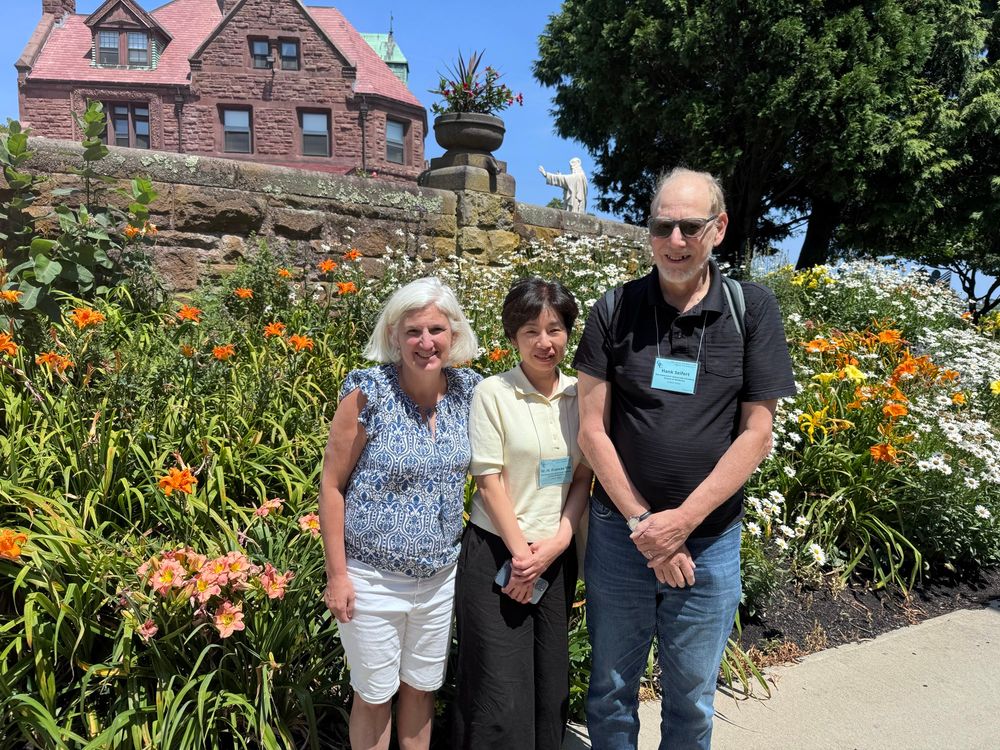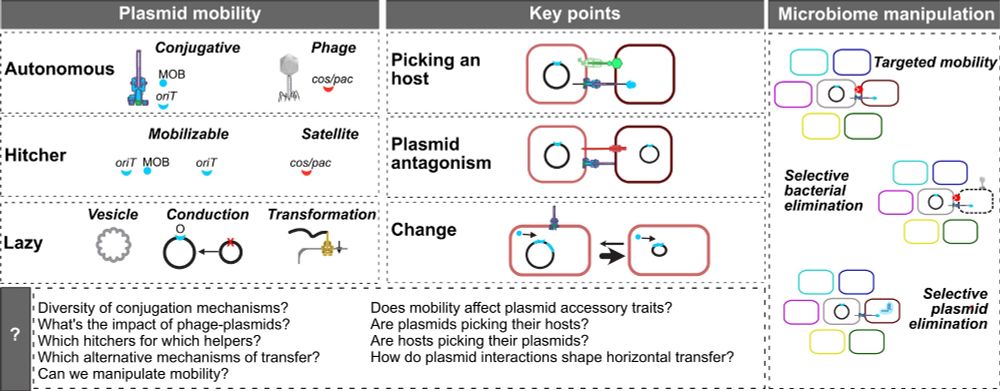
It is absolutely wild that the guy who won’t stop yelling about law and order is now personally stepping in to keep January 6 documents hidden from the police officers who were attacked that day. He knows exactly what’s in those files and he is terrified the country will see it.
09.12.2025 21:26 — 👍 16291 🔁 7858 💬 895 📌 439
Got a competitive renewal
04.12.2025 20:50 — 👍 1 🔁 0 💬 0 📌 0
Validate User
Iryna Boiko and Selma Mettane show that most gonococcal genomic sequences are from nonpiliated bacteria, even though clinical isolates are piliated.
Publicly Available Neisseria Gonorrhoeae Genomes Predominantly Represent In Vitro-Derived Nonpiliated Variants: academic.oup.com/jid/article/...
03.12.2025 14:11 — 👍 1 🔁 1 💬 0 📌 0

What you get if you stay in academics a long time and volunteer to participate in the important things.
18.11.2025 14:26 — 👍 10 🔁 0 💬 4 📌 0
18.11.2025 14:23 — 👍 0 🔁 0 💬 0 📌 0
The right-wing think tank which wrote the entire platform for the current president of the US is defending neo-Nazis, and meanwhile a substantial portion of American rabbis think the Muslim candidate for NYC mayor who has denounced antisemitism is the biggest threat to me as an American Jew.
04.11.2025 03:32 — 👍 81 🔁 19 💬 0 📌 2
If one of the appliances in your home, say your cooker or fridge, ran using ten times the power of a normal one, you‘d replace it as fast as possible and never go near that manufacturer again, because you’d think they were catastrophically bad at making stuff.
But it’d be cool if it talked, right?
27.10.2025 12:37 — 👍 202 🔁 110 💬 3 📌 2
Midwest Microbial Pathogenesis Conference | Midwest Microbial Pathogenesis Conference 2026
Mark your calendars! #mmpc2026 The 2026 Midwest Microbial Pathogenesis Conference will be take place September 25-27, 2026 at the University of Minnesota! We are excited to welcome keynote speaker Dr. Andy Camilli. Give us a follow and watch for important information here ➡️ mmpc2026.umn.edu
23.10.2025 22:59 — 👍 10 🔁 13 💬 0 📌 1
Microbiology Postdoctoral Position (Please re-post)
A funded postdoctoral position in Chicago will open in 2026 to study aspects of Neisseria gonorrhoeae pathogenesis, antigenic variation, genetics, or physiology.
If interested, please get in touch with Hank Seifert
h-seifert@northwestern.edu
21.10.2025 16:19 — 👍 2 🔁 10 💬 0 📌 0
Reposting, submit soon!
08.10.2025 00:16 — 👍 11 🔁 10 💬 0 📌 0
Apply - Interfolio
{{$ctrl.$state.data.pageTitle}} - Apply - Interfolio
We're hiring! Check out our ad and please re-post or forward to interested #Microbiology parties: apply.interfolio.com/174783
07.10.2025 16:10 — 👍 19 🔁 30 💬 0 📌 3
Apply - Interfolio
{{$ctrl.$state.data.pageTitle}} - Apply - Interfolio
UChicago Microbiology is searching for tenured or tenure-track faculty working in host-pathogens interactions, viral and bacterial pathogenesis, and emerging infectious diseases. Come join our vibrant Department! microbiology.uchicago.edu
Apply here apply.interfolio.com/174404
05.10.2025 12:03 — 👍 62 🔁 71 💬 2 📌 1
Opening session for the 2025 Midwest Microbial Pathogenesis Conference.Going on with Year 31 of this great get together. @
#mmpcconference
04.10.2025 01:14 — 👍 6 🔁 0 💬 0 📌 0
 16.09.2025 13:04 — 👍 0 🔁 0 💬 0 📌 0
16.09.2025 13:04 — 👍 0 🔁 0 💬 0 📌 0
Postdoc position (please re-post)
A funded postdoctoral position, will open in 2026 to study aspects of Neisseria gonorrhoeae pathogenesis, antigenic variation, genetics, or physiology.
If interested in more information, please contact Hank Seifert
h-seifert@northwestern.edu
#MicroSky
06.09.2025 19:32 — 👍 19 🔁 24 💬 0 📌 0
Postdoctoral Position (Please re-post)
A funded postdoctoral position, will open in 2026 to study aspects of Neisseria gonorrhoeae pathogenesis, antigenic variation, genetics, or physiology.
If interested in more information, please contact Hank Seifert
h-seifert@northwestern.edu
05.09.2025 14:13 — 👍 3 🔁 4 💬 0 📌 0
Our latest efforts to understand Enterococcal wound infection. In long-term collaboration with @gthibault.bsky.social, we discovered how E. faecalis makes extracellular ROS - via EET!⚡️Which in turn dysregulates host UPR to delay wound healing. Led by @aarontan.bsky.social - his videos below are 🤩!
11.08.2025 03:51 — 👍 43 🔁 14 💬 0 📌 2
Happy to see that this fantastic work is in press now! Congrats to the Palmer lab and lead authors @xiaomeiren.bsky.social and @rmasonclark.bsky.social.
05.08.2025 00:14 — 👍 9 🔁 2 💬 1 📌 0
Please contact Congress ASAP to raise awareness of this accounting plan.
28.07.2025 18:35 — 👍 1 🔁 0 💬 0 📌 0
Cools story about bacterial crosstalk influencing disease relevant traits! 🧪
26.07.2025 12:05 — 👍 13 🔁 5 💬 0 📌 0

Northwestern Micro representing at the 2025GRC MAST conference in beautiful Newport. Great science, collegial people but there’s a cloud hanging over us all. ☁️
24.07.2025 19:39 — 👍 16 🔁 2 💬 0 📌 1

graphical abstract of the article the extended mobility of plasmids
Here's our new broad review on the extended mobility of plasmids, about all mechanisms driving and limiting their transfer. From conjugation to conduction, phage-plasmids to hitchers, molecular to evolutionary dynamics, ecology to biotech. The state of affairs. 1/9 academic.oup.com/nar/article/...
23.07.2025 07:35 — 👍 184 🔁 93 💬 4 📌 9
PhD in Biochemistry and Biotechnology
PostDoc in The Maxwell Lab at the University of Toronto. PhD. CIHR and EPIC-GSK Postdoctoral Fellow. | He/Him 🏳️🌈 Co-Founder of Pride in Microbiology | Saamis(Prairies) ➡️ Kjipuktuk(Halifax) ➡️ Tkaronto(Toronto).
How to specifically select a protein from one side of the membrane and to transport it on the other side ? That's what we love to understand. #T6SS #T9SS
Location: CNRS - Aix-Marseille Université, France
https://www.cascaleslab.fr
PhD @ Kline Lab 🇸🇬. Bacteria, cell biology, and anything in between 🧬🧫
Oral and gastrointestinal #microbiome #metabolome studies. Topics include relationship to diet and wellness ( #IBD / #cancer / #ostomy/ #ShortBowel syndrome) views are my own.
Microbiologist fascinated by host-microbe interactions. T5 phage aficionado. Bacteriophage hunter. Associate Professor at Paris-Saclay University
Institute for Integrative Biology of the Cell @i2bcparissaclay.bsky.social
Microbiologist. Dad. Runner with bad knees. Church of Springsteen follower.
Postdoc, antisense oligomers, computational (micro)biology, antibiotics, 🦠bacteria🦠, microbiome, immunology, AMR, global health, statistics.
he/him
https://linkedin.com/in/jakob-jung/
https://github.com/jakobjung
https://mstdn.science/@jakobjung
Professor and Chair, Department of Microbiology, University of Chicago. Study the pathogenesis of tuberculosis, and other mycobacterial infections. Opinions my own.
The 32nd Annual MMPC, hosted by the University of Minnesota on Sept 25-27, 2026. Co-chairs Anna Tischler @annatischler.bsky.social and Julia Willett @jlewillett.bsky.social. Website: https://mmpc2026.umn.edu/
PhD (PPU R&T) Student in Chemoproteomics @pasteur.fr - @dumenillab.bsky.social & Mass Spectrometry for Biology
... On the quest of preventing Neisseria piliation ... 🧭🦠
#TeamMassSpec
https://research.pasteur.fr/fr/member/philipp-deist/
Director of Discovery Chemistry at
Stealth Medicines
Evolution-Guided Pharmacology, Drug Discovery, Chemical Immunology, Aging
Post doctoral researcher at University of Illinois Chicago, Pharmaceutical science department.
PhD student in Dr. Andrew Camilli's lab studying cholera phage at Tufts University in Boston,MA!
Antimicrobial Resistance Research and Epidemiology
Working for Doctors without Borders #MSF
Former: #WHO #LSHTM #MarieCurieFellowship
#AMR #medsky #episky #microsky #aidsky #idsky
Nature Portfolio’s high-quality products and services across the life, physical, chemical and applied sciences is dedicated to serving the scientific community.







 16.09.2025 13:04 — 👍 0 🔁 0 💬 0 📌 0
16.09.2025 13:04 — 👍 0 🔁 0 💬 0 📌 0




